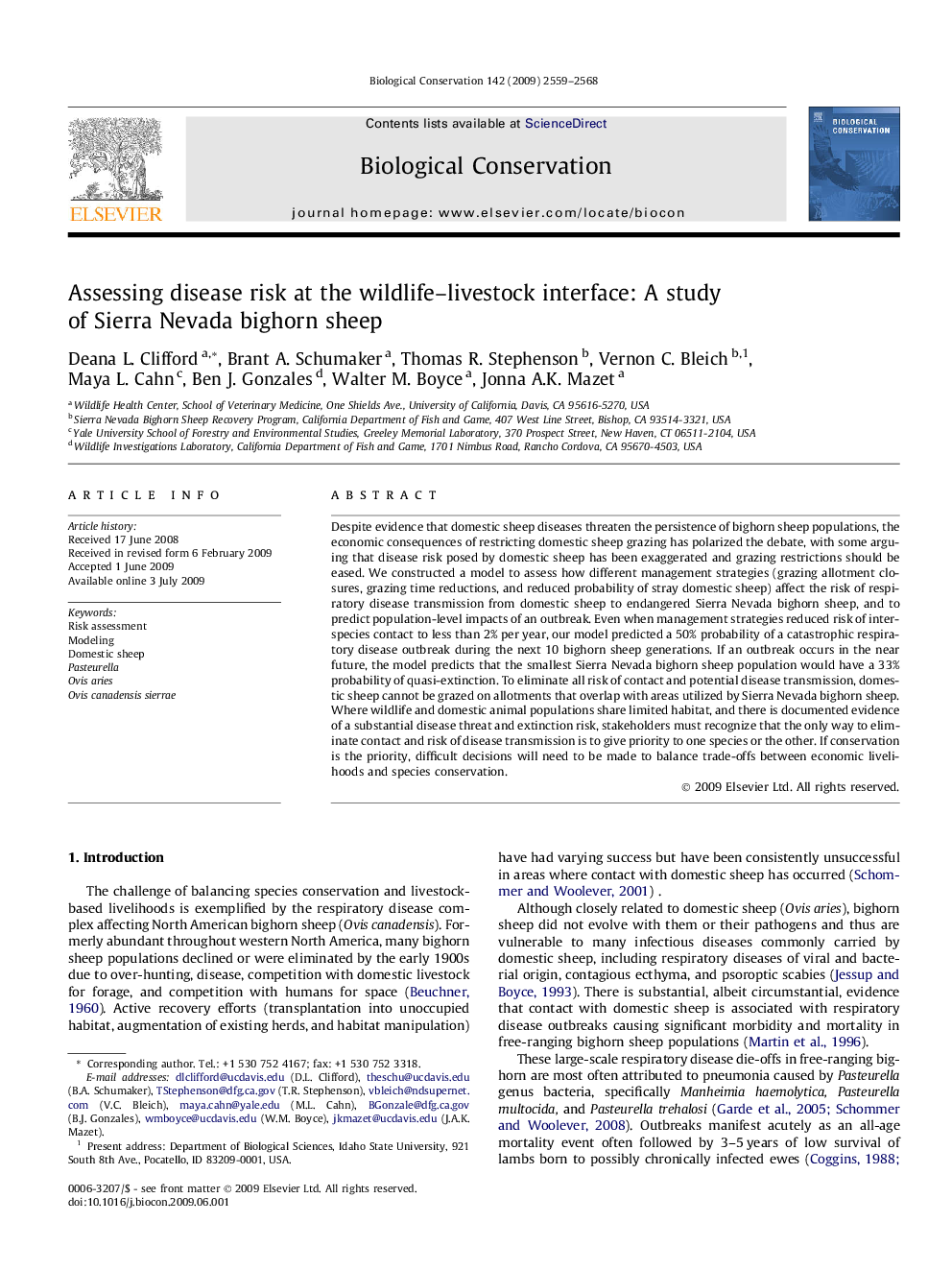| Article ID | Journal | Published Year | Pages | File Type |
|---|---|---|---|---|
| 4385858 | Biological Conservation | 2009 | 10 Pages |
Despite evidence that domestic sheep diseases threaten the persistence of bighorn sheep populations, the economic consequences of restricting domestic sheep grazing has polarized the debate, with some arguing that disease risk posed by domestic sheep has been exaggerated and grazing restrictions should be eased. We constructed a model to assess how different management strategies (grazing allotment closures, grazing time reductions, and reduced probability of stray domestic sheep) affect the risk of respiratory disease transmission from domestic sheep to endangered Sierra Nevada bighorn sheep, and to predict population-level impacts of an outbreak. Even when management strategies reduced risk of interspecies contact to less than 2% per year, our model predicted a 50% probability of a catastrophic respiratory disease outbreak during the next 10 bighorn sheep generations. If an outbreak occurs in the near future, the model predicts that the smallest Sierra Nevada bighorn sheep population would have a 33% probability of quasi-extinction. To eliminate all risk of contact and potential disease transmission, domestic sheep cannot be grazed on allotments that overlap with areas utilized by Sierra Nevada bighorn sheep. Where wildlife and domestic animal populations share limited habitat, and there is documented evidence of a substantial disease threat and extinction risk, stakeholders must recognize that the only way to eliminate contact and risk of disease transmission is to give priority to one species or the other. If conservation is the priority, difficult decisions will need to be made to balance trade-offs between economic livelihoods and species conservation.
